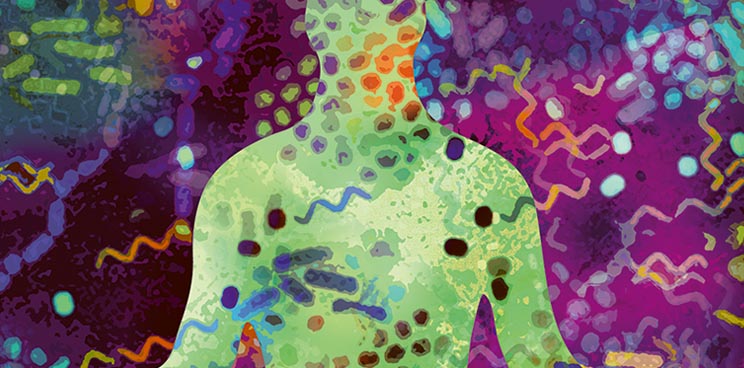Lethal Plastic Cocktail: Impact on Human Health
by Zann Gill, earthDECKS Founder
Recent tests have shocked the public with the data that 100% of subjects tested from eight different countries had plastic in their stool samples. In October 2018, the National Geographic published an overview of the many research studies highlighting that plastic is not just a problem for the health of birds and marine life – it’s now in all of us. National Geographic has teamed up with Wattpad to raise awareness of the global plastic issue through a creative storytelling challenge, asking people to share a story—real or fiction—inspired by this global issue. Learn more about plastic stories and share your story. In October 2018 The Smithsonian noted that sesame-sized plastic particles are ubiquitous. In the popular press, The Huffington Post featured an eye-catching title: Humans Are Pooping Plastic, And No One’s Certain How Bad That Is.
Philipp Schwabl, a gastroenterologist at the Medical University of Vienna, conducted the human stool experiment. He wants his findings to spur research into the effects of microplastics on human health. His study involved three men and five women, aged 33 to 65, from seven different European countries and Japan. Participants kept a food diary for a week and then provided a stool sample for testing. All stool samples tested positive for plastic. Though there were only eight test subjects, the fact that they represented eight different countries grabbed public attention.
A half century “uncontrolled experiment” of unleashing fossil-fuel based plastics into our environment has boomeranged into a crisis for our environment and our health — possibly as serious a problem as climate change. No corner of the earth, no animal, no body of water, no human, is immune from the impacts of our now lethal plastic cocktail. A Smithsonian expedition to the uninhabited Blue Fox Island in Alaska, found its shores littered with plastic.
Image Credit: Janssen. Human Microbiome Institute.

The lethal plastic cocktail we drink daily has multiple sources. Governments only test or analyze the impacts of individual chemicals to determine the levels of potentially life-threatening exposure, making it impossible to figure out the combined total load of chemicals from plastics our babies can safely absorb.
A striking lineup of diseases are now linked to our consumption of plastic:
- cancer,
- premature puberty,
- reduced immunity,
- birth defects,
- endocrine disruption,
- insulin resistance, and
- other major diseases
Many of the chemicals in plastics are linked to the most serious health impacts in animal studies as well as human studies. For example, 94 percent of our drinking water and 93 percent of sampled bottled water worldwide are full of plastic particles and chemicals, including
- BPA,
- heavy metals,
- phthalates,
- pesticides,
- PCBs and
- other chemicals .
The FDA, EPA, and other federal agencies charged with studying these impacts, cannot ascertain whether this is a lethal cocktail because plastics bind together with other toxins and what impact we should anticipate on our health and that of our kids. What we get now from those agencies is “conflicting findings” and “uncertainties” about the potential impact of plastics-related chemicals.
Many plastic products, such as disposable syringes and intravenous bags, support public health. But increasingly, diseases, such as cancer, premature puberty, reduced immunity, birth defects, endocrine disruption, insulin resistance are linked to plastic. Most of what we eat and drink contains plastics:
- Minute microplastics and fibres, measuring the width of a human hair, or less, have been found in many products, from honey to sugar, shellfish, bottled and tap water, beer, processed foods, table salt and soft drinks, even in organic products.
- 93% of adults tested in the US had known carcinogenic chemical bisphenol A in their urine.
- 83% of samples of tap water tested in seven countries were found to contain plastic microfibres.
- A study published in March 2018 revealed plastics contamination in more than 90% of bottled-water samples from 11 different brands.
- A German study found fibres and fragments in the 24 beer brands tested.
In another study, 259 water bottles from 27 lots across 11 brands, purchased from 19 locations in nine countries were tested to conclude that 94 percent of our drinking water and 93 percent of sampled bottled water worldwide contain plastic particles and chemicals, including BPA, heavy metals, phthalates, pesticides, PCBs and other chemicals. We’ve kept this information repressed for more than five years as our plastic footprint grows along with its impact on our health.
